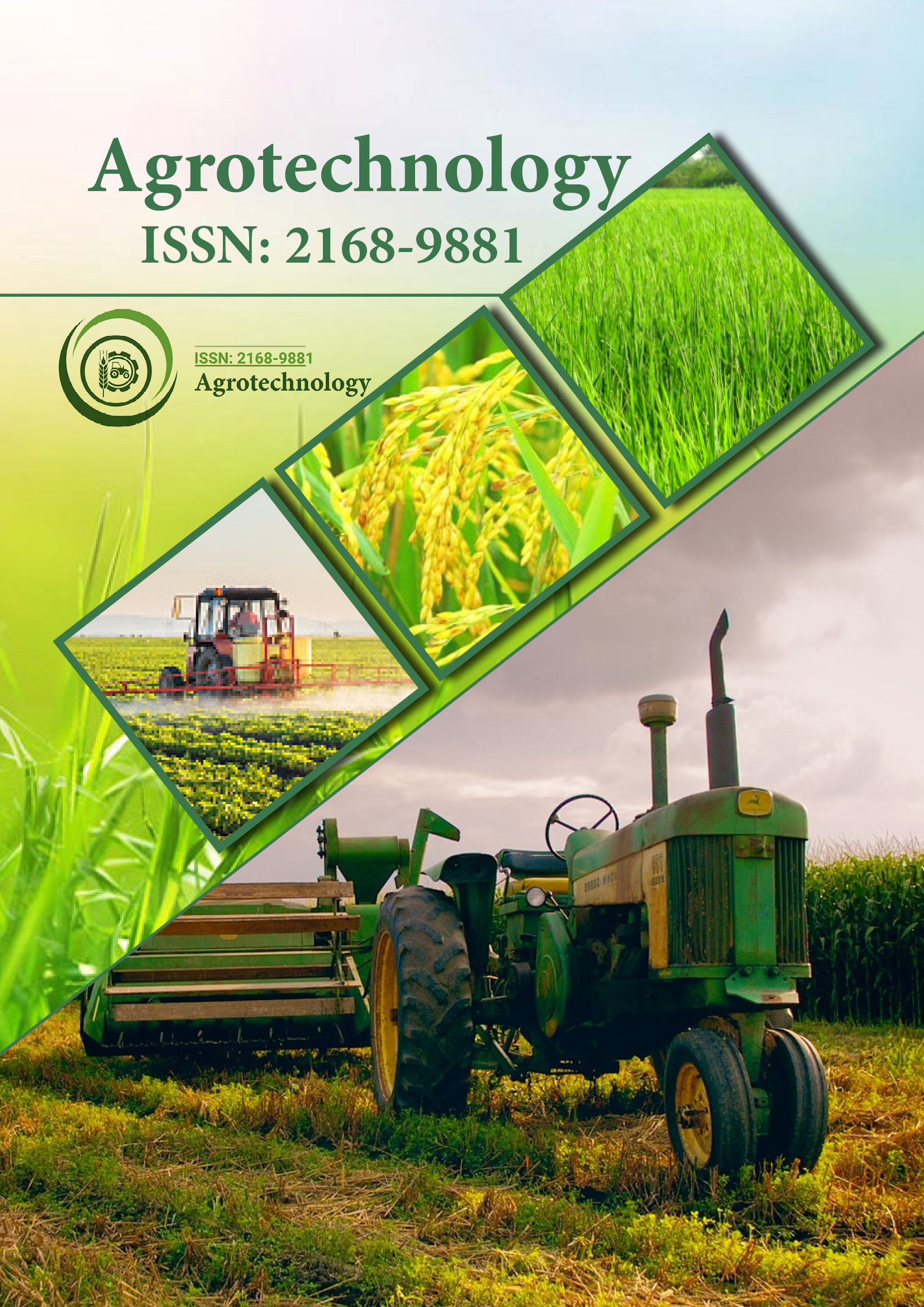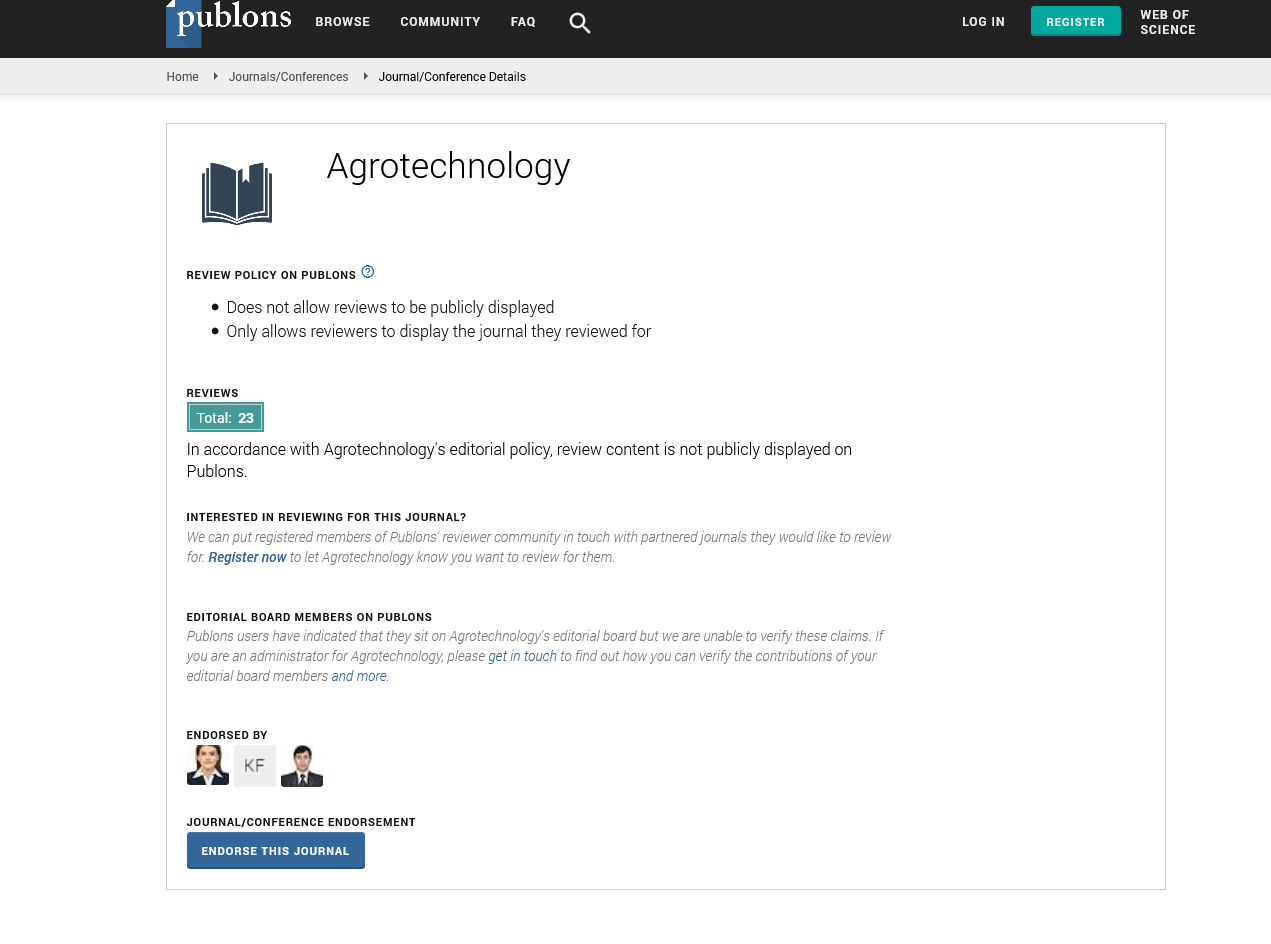Indexed In
- Open J Gate
- Genamics JournalSeek
- Academic Keys
- ResearchBible
- Cosmos IF
- Access to Global Online Research in Agriculture (AGORA)
- Electronic Journals Library
- RefSeek
- Directory of Research Journal Indexing (DRJI)
- Hamdard University
- EBSCO A-Z
- OCLC- WorldCat
- Scholarsteer
- SWB online catalog
- Virtual Library of Biology (vifabio)
- Publons
- Geneva Foundation for Medical Education and Research
- Euro Pub
- Google Scholar
Useful Links
Share This Page
Journal Flyer

Open Access Journals
- Agri and Aquaculture
- Biochemistry
- Bioinformatics & Systems Biology
- Business & Management
- Chemistry
- Clinical Sciences
- Engineering
- Food & Nutrition
- General Science
- Genetics & Molecular Biology
- Immunology & Microbiology
- Medical Sciences
- Neuroscience & Psychology
- Nursing & Health Care
- Pharmaceutical Sciences
Opinion Article - (2024) Volume 13, Issue 3
Reducing Emissions and Energy use in Farming through Crop Diversity
Josh Kitle*Received: 23-Aug-2024, Manuscript No. AGT-24-26688; Editor assigned: 26-Aug-2024, Pre QC No. AGT-24-26688 (PQ); Reviewed: 10-Sep-2024, QC No. AGT-24-26688; Revised: 17-Sep-2024, Manuscript No. AGT-24-26688 (R); Published: 25-Sep-2024, DOI: 10.35248/2168-9891.24.13.381
Description
Reducing energy consumption and carbon footprint in agriculture is a significant challenge, especially in the context of climate change and the need for sustainable food production. One promising approach is the adoption of diversified rainfed cropping systems, which offer numerous environmental, economic, and social benefits. By optimizing the use of natural rainfall and diversifying crops, farmers can significantly reduce their dependence on energy-intensive inputs and mitigate greenhouse gas emissions. This article explains how diversified rainfed cropping systems contribute to reducing energy use and carbon footprint while enhancing agricultural sustainability.
Rainfed agriculture, which relies on natural precipitation rather than irrigation, accounts for a significant portion of global food production. In many regions, particularly in developing countries, rainfed systems are the backbone of smallholder farming. These systems are inherently less energy-intensive than irrigated agriculture because they do not require the pumping and transportation of water. However, the efficiency and sustainability of rainfed agriculture can be further enhanced through diversification.
Diversified cropping systems involve growing a variety of crops in a planned sequence or mixture, rather than relying on monoculture. This approach has several advantages. Firstly, it reduces the risk of crop failure due to pests, diseases, or adverse weather conditions, as different crops have varying susceptibilities. Secondly, crop diversification can improve soil health by promoting a balance of nutrients and reducing the need for chemical fertilizers. Thirdly, diverse cropping systems enhance biodiversity, which can lead to more resilient ecosystems.
One of the primary ways diversified rainfed cropping systems reduce energy use is by decreasing the need for synthetic inputs. Monoculture systems often require substantial amounts of fertilizers and pesticides to maintain high yields, which are energy-intensive to produce and apply. In contrast, diversified systems can leverage natural synergies between different crops to enhance soil fertility and pest control. For example, leguminous crops such as beans and peas can fix atmospheric nitrogen, enriching the soil and reducing the need for synthetic nitrogen fertilizers. Additionally, the presence of multiple crops can disrupt pest cycles and reduce the incidence of diseases, lowering the reliance on chemical pesticides.
By reducing the dependency on synthetic inputs, diversified cropping systems also lower the carbon footprint of agriculture. The production and application of fertilizers and pesticides are significant sources of greenhouse gas emissions, particularly Nitrous Oxide (N2O), which has a global warming potential much higher than Carbon dioxide (CO2). Minimizing the use of these inputs through crop diversification can significantly reduce emissions. Moreover, diversified systems often incorporate cover crops and crop rotations that enhance soil organic matter and sequester carbon, further mitigating climate change.
Another energy-saving aspect of diversified rainfed cropping systems is the reduction in fuel use for machinery. Monoculture farms typically rely heavily on mechanization for planting, weeding, and harvesting. In contrast, diversified systems, particularly those practiced by smallholder farmers, often use more labor-intensive methods that require less fuel. While labor intensive practices might be seen as a drawback in some contexts, they can provide employment opportunities in rural areas and reduce the overall energy footprint of farming operations.
Diversified cropping systems also contribute to water conservation, which indirectly affects energy use. Irrigation is one of the most energy-intensive agricultural practices, accounting for a significant share of global agricultural energy consumption. By relying on rainfall, diversified rainfed systems avoid the energy costs associated with pumping and distributing irrigation water. Furthermore, diverse crop mixtures and rotations can improve soil structure and water retention, reducing the need for supplemental irrigation even in semi-arid regions.
The implementation of agro-ecological practices within diversified rainfed systems can further enhance their energy and carbon efficiency. Agroecology emphasizes the use of natural processes and local knowledge to create sustainable agricultural systems. Techniques such as agroforestry, intercropping, and conservation tillage can improve resource use efficiency and resilience. Agroforestry, for instance, integrates trees and shrubs into cropping systems, providing multiple benefits such as shade, windbreaks, and organic matter. Trees also sequester carbon, contributing to climate mitigation efforts.
Intercropping, where two or more crops are grown together, can optimize space and resources. For example, planting deep-rooted crops alongside shallow-rooted ones can maximize water and nutrient uptake, reducing the need for external inputs. Conservation tillage, which minimizes soil disturbance, helps maintain soil structure, reduces erosion, and enhances water infiltration. These practices collectively reduce the energy required for soil preparation and maintenance while improving the overall sustainability of the farming system.
The social and economic benefits of diversified rainfed cropping systems are also noteworthy. By reducing input costs and enhancing resilience to climate variability, these systems can improve the livelihoods of smallholder farmers. Diversification provides multiple sources of income and food, reducing vulnerability to market fluctuations and crop failures. Additionally, the environmental benefits of diversified systems, such as improved soil health and biodiversity, can enhance ecosystem services that support long-term agricultural productivity.
Transitioning to diversified rainfed cropping systems requires supportive policies and investments. Governments and development organizations can play a important role by providing technical assistance, training, and financial incentives to encourage farmers to adopt sustainable practices. Research and extension services should focus on developing and disseminating locally adapted crop varieties and agroecological techniques that suit the specific conditions of different regions. Additionally, investments in infrastructure, such as rainwater harvesting and storage systems, can enhance the reliability of rainfed agriculture.
In conclusion, diversified rainfed cropping systems offer a viable pathway to reducing energy use and carbon footprint in agriculture. By minimizing reliance on synthetic inputs and mechanization, enhancing soil health, and promoting biodiversity, these systems contribute to more sustainable and resilient farming practices. The benefits extend beyond environmental sustainability, improving the livelihoods of smallholder farmers and supporting rural development. To realize the full potential of diversified rainfed cropping systems, concerted efforts are needed to provide the necessary support and resources for farmers to transition to these sustainable practices. Through collaborative action, we can achieve a more sustainable and climate-resilient agricultural future.
Citation: Kitle J (2024). Reducing Emissions and Energy use in Farming through Crop Diversity. Agrotechnology. 13:381.
Copyright: © 2024 Kitle J. This is an open access article distributed under the terms of the Creative Commons Attribution License, which permits unrestricted use, distribution, and reproduction in any medium, provided the original author and source are credited.


